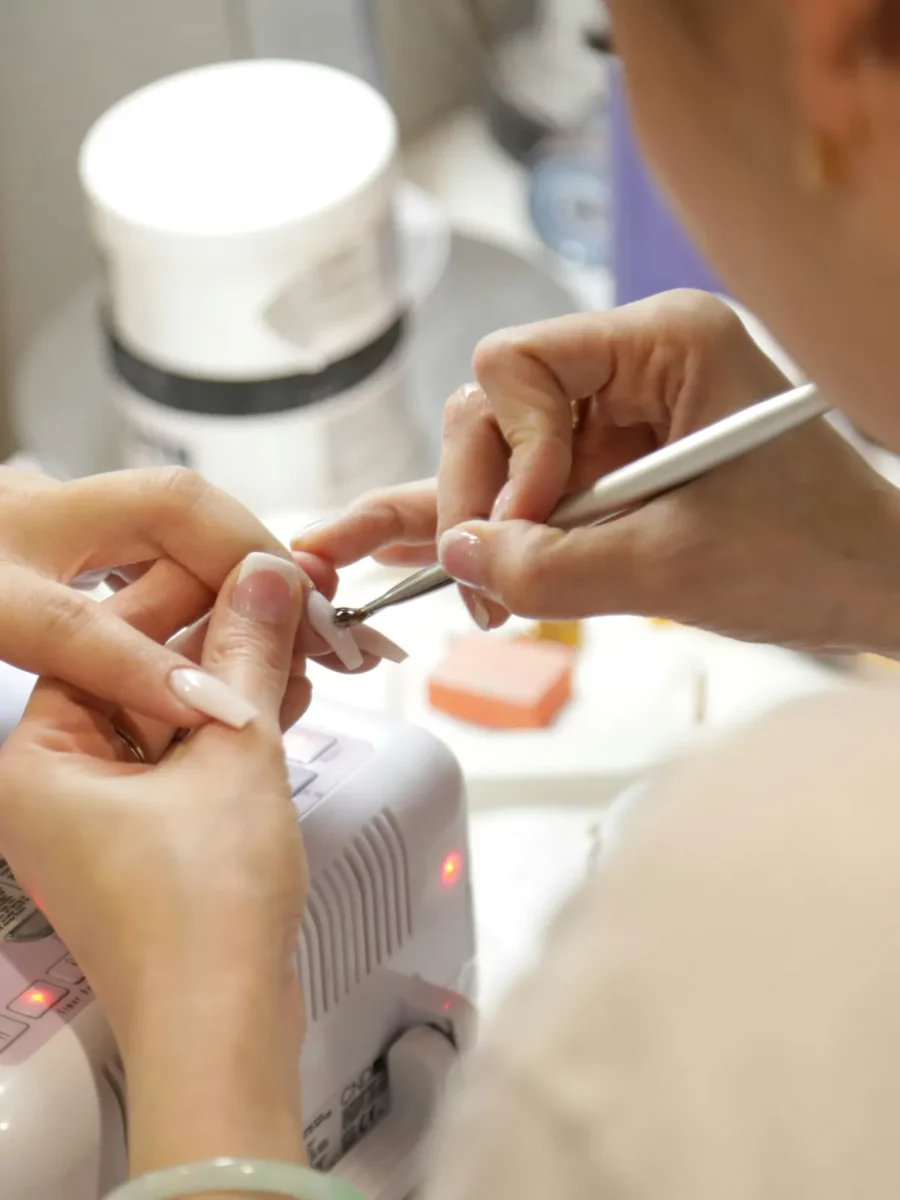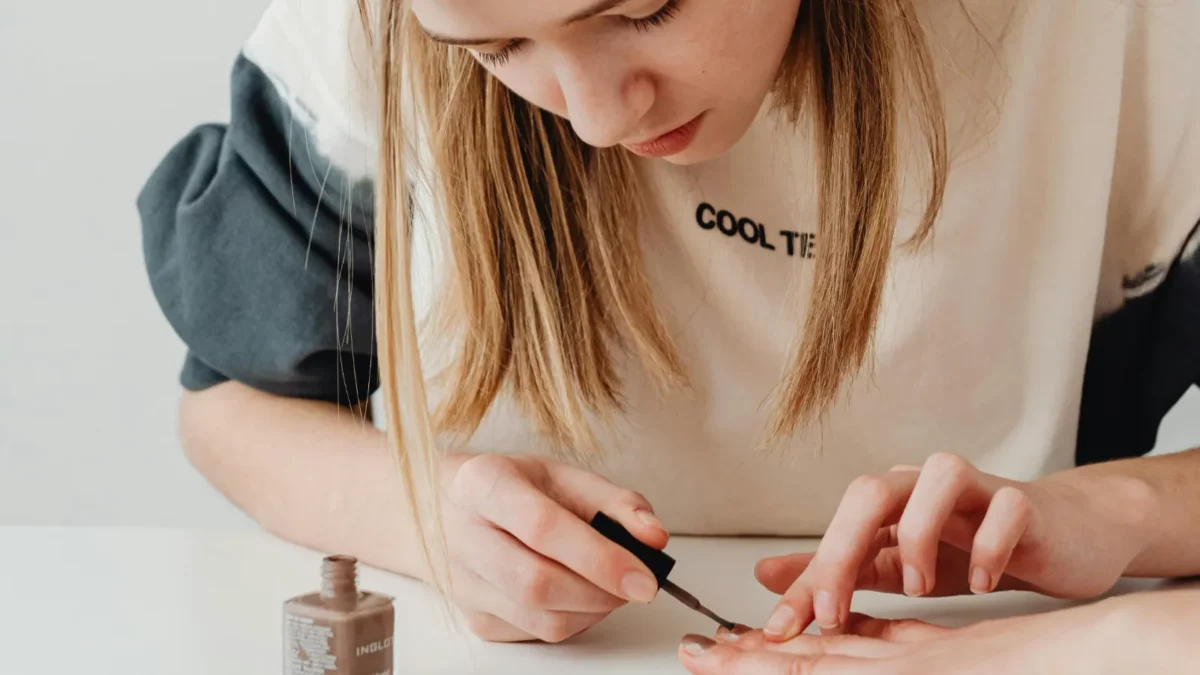You feel it’s the time to try new vibrant nail colors and intricate designs. The only concern is to get rid of the current manicure and the nail glue.
Indeed, not everyone knows how to remove nail glue easily.
Considerations Before the Manicure
Do you do your due diligence before placing your hand down for a manicure? Do you know the function of the props your manicurist uses?
These details are important because how you treat your nails before a manicure determines how easy it is to remove them later.
Use Only High-Quality Nail Glue
Nail glues are vital to fixing artificial nails.
Opting for products from reputable brands is safer since you can’t always know the quality of chemicals used in making the glue. These products offer better adhesion. You won’t have to worry about your precious nails falling off while you dip your hands in a bag of Lays.
Preparing Your Nails
Always clean your nails properly. If you have nail polish on, use a mild polish remover to eliminate it.
Then, buff and shape your nails. If you have a nail file at home, you can shape your natural nails how you want. A gentle buffing of the nail’s surface will also help you create a smooth curvature that lets the nail glue sit properly.
Push back cuticles. Cuticles encroaching on your fingernails don’t look good. Use a cuticle pusher to get them in line.
Understand Application Techniques
The correct application of nail glue can make or break your nail-fixing escapade. The most important factor when applying nail glue is to make it firm, secure, and potentially long-lasting.
Apply a thin layer using a small brush or an applicator. Make sure the layer is thin and even. Having excess glue prevents the artificial nail from looking its best.
Don’t rush through the glue application. Divide your nails into small sections, and apply glue to one section after the other.
Let Them Dry
Patience is a virtue when fixing your nails. Don’t be in haste; let the glue stay and dry properly. Defaulting at this can lead to imperfect adhesion. Waiting 2-5 minutes will help you get the glue to perfect condition and ready for the new nails.
Avoid Excess Moisture
The adhesion weakens if excess water touches your nail glue when it has yet to cure. So, the period after fixing your nail isn’t for swimming, laundry, or dishes. Let the glue dry fully and cure.
How To Get Your Nail Glue off Your Nails

Even if you visit the salon to get the work done, sometimes it’s easier to do it yourself. Let’s see some of the methods and tools for removing nail glue.
Soap and Water
This gentle solution would yield satisfying results if you did your nails with quality materials.
First, soak your nails in warm water for a few minutes. Warm water makes the nail glue soft. The glue will fall off easily. When working on the edge, gently remove the residues.
Embracing the Nourishing Properties of Oil
Natural oils like coconut and olive oil also show great results. Oils both dissolve the adhesive and nourish your cuticles and nails.
Apply ample oil on the nails and rub it gently. Wait for a few minutes to ensure that the oil penetrates the glue. After a while, use either a cuticle stick or a soft cloth to lift and remove the nail glue.
Pure Acetone
Acetone is a popular solvent. So, if you’ve mistakenly used bad or stubborn nail glue, acetone is a potential solution.
Pour a generous amount of acetone into a bowl. Ensure that the acetone fills up to a level where your nails are entirely in the liquid. Soak the nails in the acetone bowl for about 15 minutes.
When your fingers are out, gently scrape the glue away with a cuticle. You must be cautious, however, to avoid applying too much pressure that can cause injury. Afterward, wash your nails and follow up with a moisturizing oil.
Nail Glue Removers
There are numerous nail glue removers out there, and you possibly can’t try them all.
Generally, the formulation of nail glue removers involves acetone and nourishing materials. Specifically, each product has a set of instructions on usage. Follow the recommendations from the manufacturers to get the best result.
Can Nail Glue Damage Your Nail Beds?
According to the American Academy of Dermatology, about 99% of people will experience a nail disorder in their lifetime. This then begs whether nail glue can contribute to that number by damaging your nail beds.
The answer depends on how you apply or remove the nail glue. If you properly apply nail glue during a manicure, you shouldn’t be worried about nail bed damage.
Beyond removal, nail maintenance also plays a major role in the risk of bed damage. To keep your nail beds safe, take good overall nail care.
Frequently Asked Questions
What Are the Best Ways To Get Nail Glue off Your Skin?
It’s possible that some nail glue spilled over to your skin. You shouldn’t be alarmed. Any of the methods we explored above can do the trick. It’s better to start with the most natural technique of soaking the affected area in warm water. After a few minutes, use a cuticle stick or cloth to rub off the glue.
How Do You Remove Nail Glue After Wearing False Nails?
You can leverage natural and acetone techniques to remove nail glue. You can use warm water, nail glue remover, pure acetone, natural oils, or visit a professional.
Does Rubbing Alcohol Remove Nail Glue?
Alcohol is known to dissolve general-purpose adhesives. But it may not be the advised option to remove nail glues. It’s safer to use acetone-based solutions.
How Does Nail Glue Differ From Superglue and Other Household Adhesives?
Nail glues are explicitly designed to attach artificial nails to natural nails. Super glue, on the other hand, works as a household adhesive. Super glue and other household adhesives have additional components that make them too aggressive for the skin and nails.
